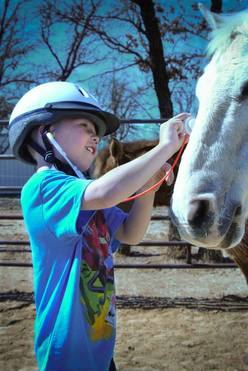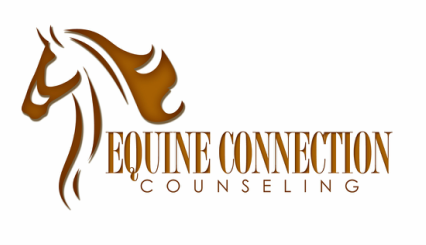
Play therapy provides children with the necessary materials to explore, process, and express feelings in a safe therapeutic environment. Children use play to make sense of the world. This is different from adults, who often talk to process things. Play therapy is built on the idea that play is a child’s language and toys are their words. How a child interacts with toys and with the therapist through play can reveal the child’s feelings, wishes, or needs. Child-centered play therapy is a method that allows the child to direct the content and process of the play session. By letting the child take the lead, he or she is empowered to explore and express his/herself as well as build empathy, problem solving skills, and self-esteem.
Equine Partnered Play Therapy (EPPT) is Dr. Sheade’s method of equine-assisted play therapy. It uses the evidenced-based techniques of child-centered play therapy and incorporates horses into the counseling process. Working with our miniature horses provides children with the opportunity to build relationships and gain awareness. The therapist can gain information about the child from the way he/she interacts with the horses. The horses also provide feedback to the child about his/her behaviors. For example, a horse may move away from a child who approaches too quickly. The therapist can reflect that the horse felt scared when the child ran towards it, increasing awareness of the horse’s feelings and how the child’s behavior affects others. The child might choose to approach the horse more slowly next time because they are now aware that moving too quickly scares the horse. These types of interactions can help a child learn self-regulation, empathy, and self-confidence.
Play therapy is a great option for children who are too young to verbally process their experience. We recommend EPPT for children ages 3-9. Some older children with developmental challenges or severe trauma may also benefit from play therapy. Concerns that can be addressed in EPPT include: attention problems and impulsiveness, anxiety/worry, acting out, anger/aggression, and many more.
As effective as EPPT can be, it is a small part of the child’s life. Therefore it is also important to us to work with the child’s family to identify appropriate techniques for behavior management and strengthening their relationship with the child. To protect the child’s privacy, the therapist will share overarching themes in the child’s play rather than specific content. This ensures that the child feels comfortable to express him/herself while also giving families the information they need to support the child’s progress. The therapist may also make recommendations or offer information about tools such as limit setting.
Want to learn how to do EPPT? Join us at our next scheduled EPPT Training Workshop. More details can be found here!
Do you have more questions about EPPT or play therapy in general? We recommend watching the videos below from the Center for Play Therapy at the University of North Texas; there is one for children and one for parents. For other questions, please contact us or respond in the comments below and we will be happy to help you find the answers!

 RSS Feed
RSS Feed
